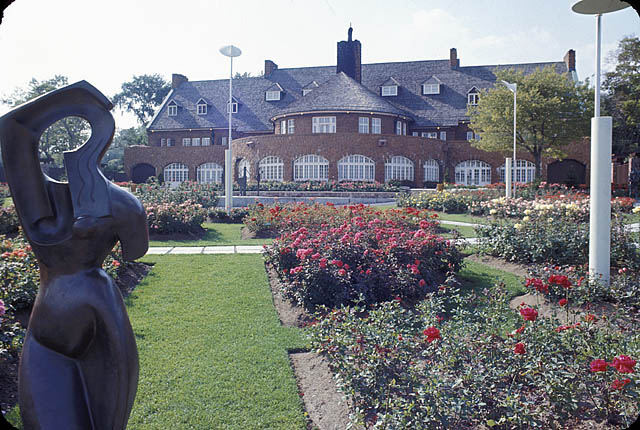

Photo credit: © National Archives of Canada
"Billy Rose" sculpture in front of Hélène de Champlain Restaurant
| The area of Ile Sainte-Hélène was 137
acres - till the grand design of the Universal and International
Exhibition of 1967 was conceived and executed.
Now it has grown by 187 man-made acres which provide the site for the pavilion sector and for La Ronde. Parc Hélène de Champlain is the new name of the original island, preserved in its largely natural state as a place where Expo visitors can relax. Trailer Trains provide a connection through the park, close to the United States Pavilion, is Expo's magnificent rose garden and the International Exhibition of Sculpture. The elegant Hélène de Champlain Restaurant is built, like La Tour de Lévis from which the music of the world's largest electronic carillon rings out, of stone quarried on the island. Permanently operated by the City of Montreal, its use is reserved during Expo for the special guests of Commissioner General Pierre Dupuy and the Exhibition. The area has two ponds, four hills and two rivers, and its first visitor from overseas is thought to have been explorer Samuel de Champlain in 1611. The old days are recalled by colorful military maneuvers performed daily at old Fort Sainte-Hélène between noon and 8 p.m. Uniforms of La Compagnie Franche de la Marine and the Fraser Highlanders in the exciting formative years of Canadian history are worn. |
1/7